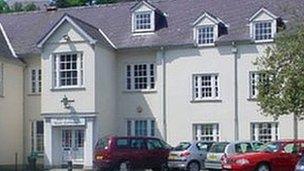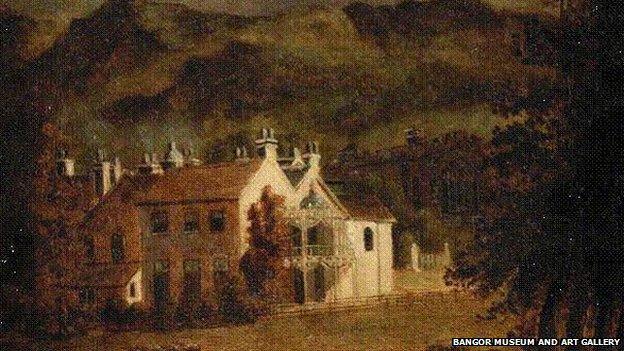Bangor museum to move to Bishop's Palace
- Published

The museum and art gallery's new home will mean collections will be easier to access
A museum and art gallery in Gwynedd is to relocate with a lottery grant of £1.4m.
Bangor Museum and Art Gallery will move from its nearby home in the canonry to the city's Bishop's Palace.
The changes also include developing five 'hubs' to display artefacts across the whole county.
The Bangor museum was saved from closure in 2009 following a public campaign.
"Some of the elements of Bangor's long history are proudly visible to people who visit and live in the city, but other aspects, such as the excellent collections currently held by Bangor University and the Bishop's Palace itself have not been seen for a long time," said Jennifer Stewart, head of the Heritage Lottery Fund in Wales.
The Grade II-listed Bishop's palace is run by Gwynedd Council and is the oldest surviving building in Bangor, after the cathedral.
It dates from the 16th Century and is the only substantially intact palace of its kind surviving from the late mediaeval period in Wales.
Gwynedd council leader Councillor Dyfed Edwards described it as "excellent news" adding that the lottery funding will form the "key part in the funding package".
The five locations which will be developed to showcase regionally and locally significant collections will be at Llanberis, Llanbedrog, Dolgellau, Blaenau Ffestiniog and Tywyn.

The building is the only substantially intact Bishop's palace surviving from the late mediaeval period in Wales
The museum was first opened in 1884 by Bangor University, and it has been run by Gwynedd council since 1991.
Dr David Roberts, registrar of Bangor University, said the development would "complement magnificently the nearby Pontio arts and innovation development".
Jeremy Yates, from the Friends of Gwynedd Museum and Art Gallery, added: "We hope to be at the heart of the growing volunteering network vital to the success of the venture, and look forward to contributing with the local expertise and experience of our members."
Adam Hitchings, development officer for Heritage Lottery Fund Wales, said the building was the city's second oldest and traditionally would have been the bishop's residence.
"If you look at it now it looks like a council building basically," he told BBC Radio Wales.
"It doesn't reveal its charms from the first time you see it, but inside you do have many of the original features intact, so the proposal is to draw attention to some of those features as well as the collection itself."
- Published11 October 2013
- Published29 June 2013
- Published8 July 2012